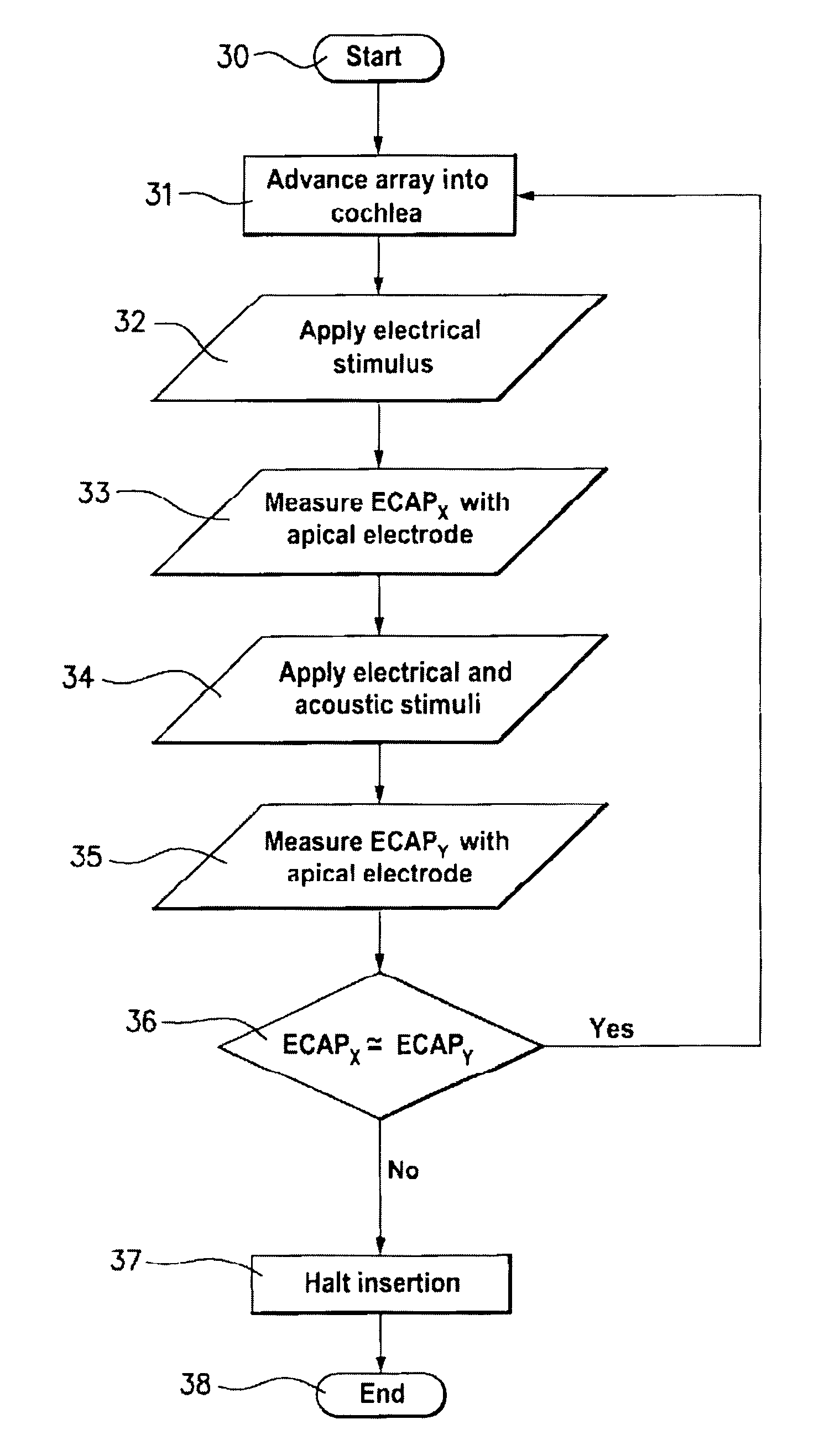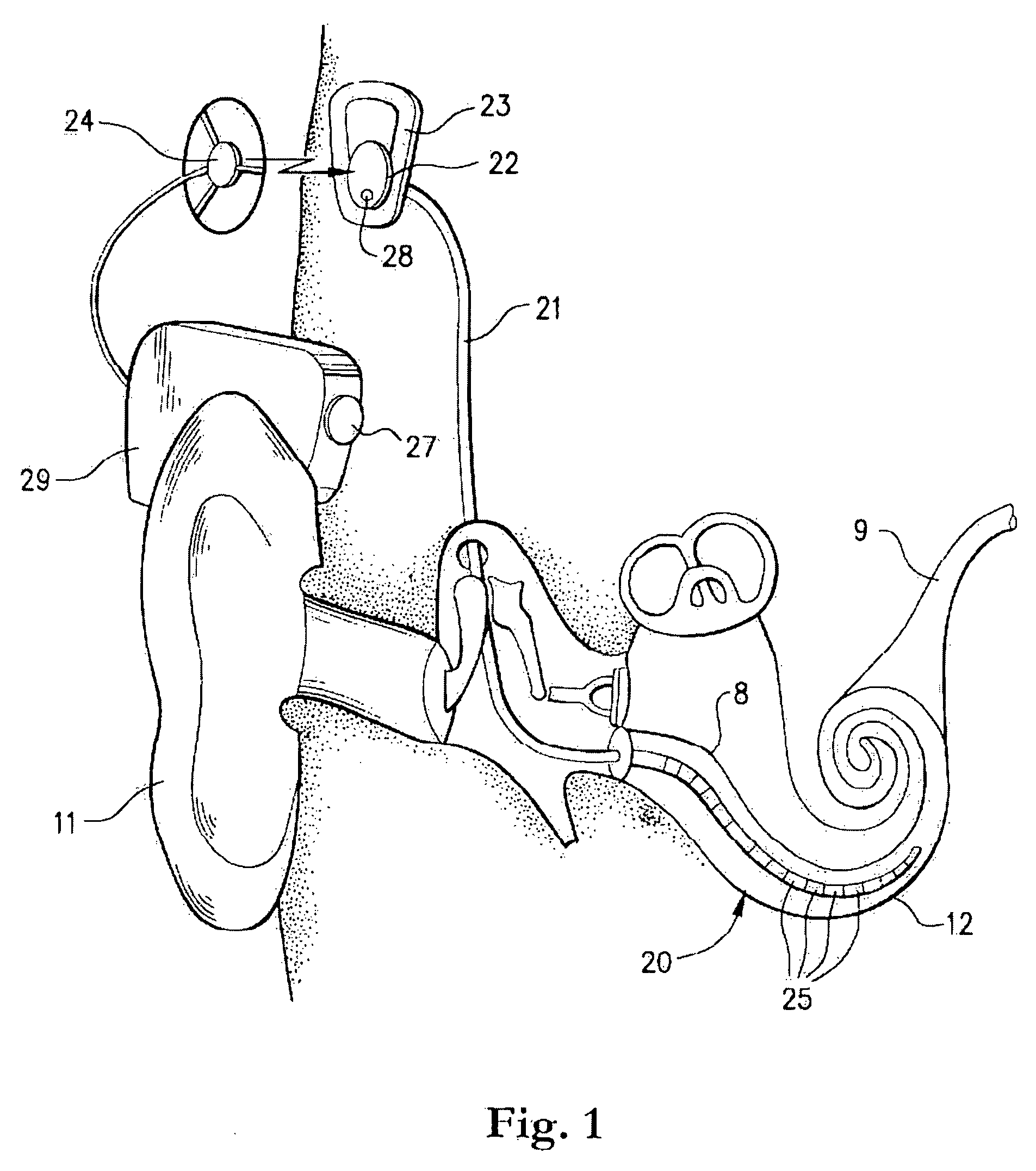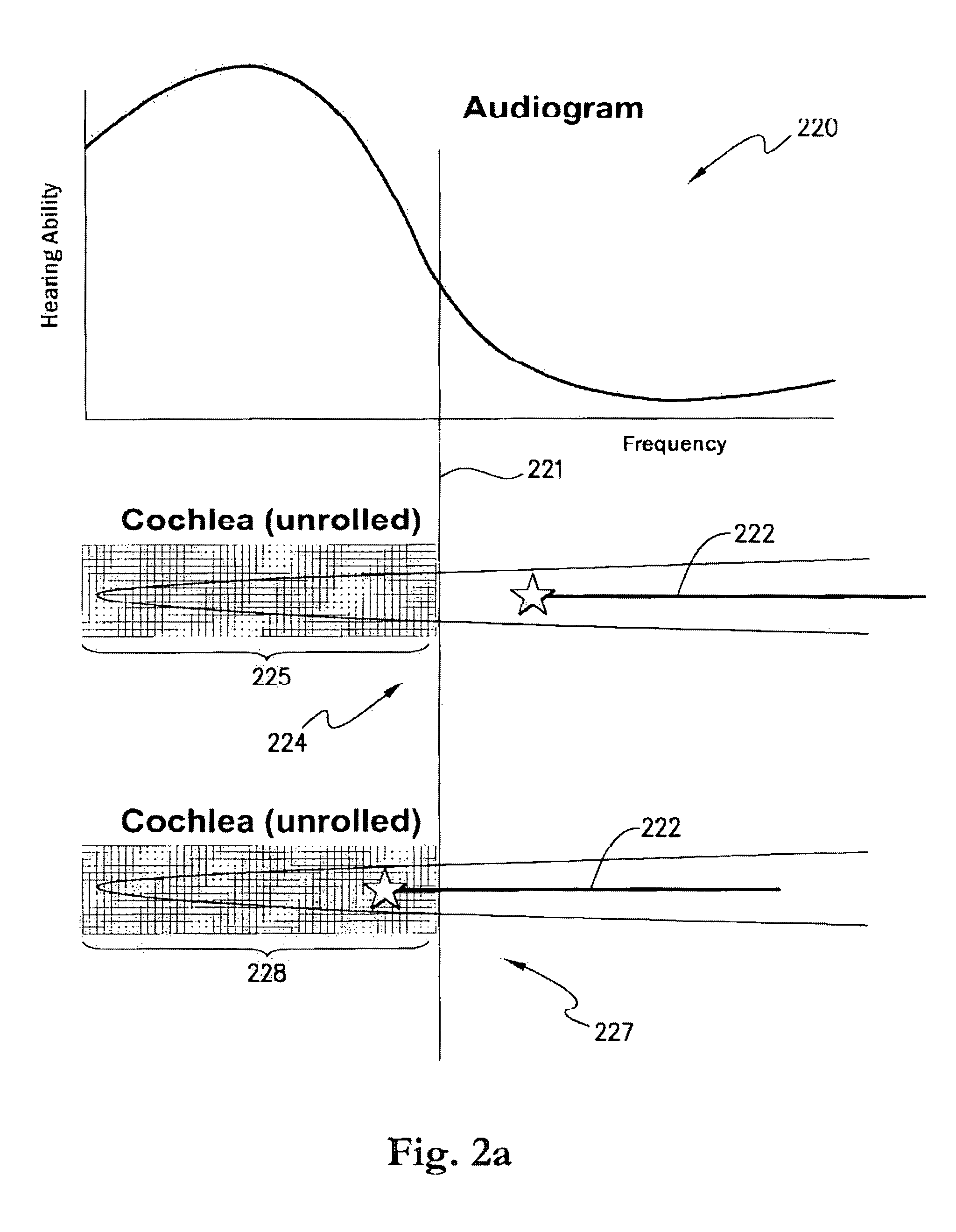Cochlear implant fitting
a cochlear implant and fitting technology, applied in the field of electromechanical array fitting, can solve the problems of patients' difficulties, the expectation of harsh and/or unnatural sounding percepts produced by cochlear implants is less attractive than simply persisting with unassisted
- Summary
- Abstract
- Description
- Claims
- Application Information
AI Technical Summary
Benefits of technology
Problems solved by technology
Method used
Image
Examples
first embodiment
[0064]the invention is illustrated in FIGS. 2a and 2b. In this embodiment, the method of the present invention is used to intra-operatively determine an optimal insertion depth of an electrode array. In patients with residual hearing it is difficult to determine a suitable depth of insertion of the electrode array, due to difficulties in precisely determining the location of the electrode, or in precisely determining the location of surviving neural elements that still can respond to acoustical stimulation. In this embodiment, since residual hearing usually exists on the more apical (lower frequency) part of the cochlea; the electrode array is introduced only until the point where usable hearing begins. An advantage of this technique is that trauma is reduced to a minimum, and that the cochlear mechanics (especially at the point where residual hearing is present) are influenced as little as possible. That is, no portion of the electrode array is positioned adjacent to the apical por...
second embodiment
[0073]FIG. 3a illustrates the present invention, in which the electrode array 42 is inserted fully within the cochlea, and involving a post-operative decision as to which electrodes to inactivate and which to include in the patient map. At 40 the residual hearing capability of the recipient is illustrated, indicating significant residual hearing at low frequencies, up to a threshold 41. Threshold 41 also indicates a position along the cochlea at which the residual hearing portion 43 terminates. In this embodiment, only a subset of electrodes are active in the map. Thus the natural pathway for delivery of acoustic sound is utilised to the extent that it still exists, while electrical stimuli are provided to convey sound information which is no longer perceptible by the cochlea and / or to supplement sound information only partially perceptible by the cochlea. Accordingly, the implant recipient will receive natural sounding percepts from those portions of the cochlea having hearing capa...
PUM
 Login to View More
Login to View More Abstract
Description
Claims
Application Information
 Login to View More
Login to View More - R&D
- Intellectual Property
- Life Sciences
- Materials
- Tech Scout
- Unparalleled Data Quality
- Higher Quality Content
- 60% Fewer Hallucinations
Browse by: Latest US Patents, China's latest patents, Technical Efficacy Thesaurus, Application Domain, Technology Topic, Popular Technical Reports.
© 2025 PatSnap. All rights reserved.Legal|Privacy policy|Modern Slavery Act Transparency Statement|Sitemap|About US| Contact US: help@patsnap.com



